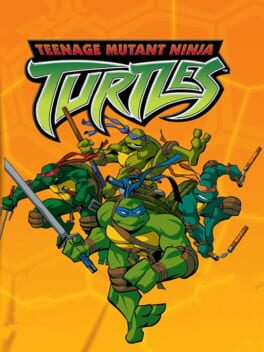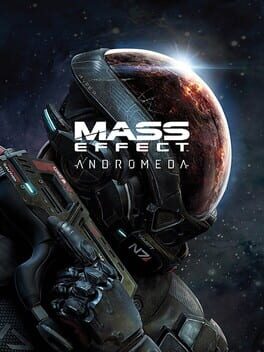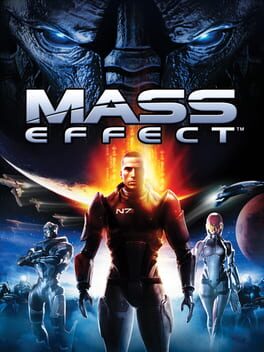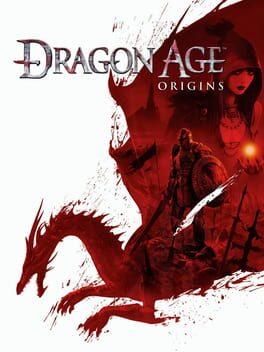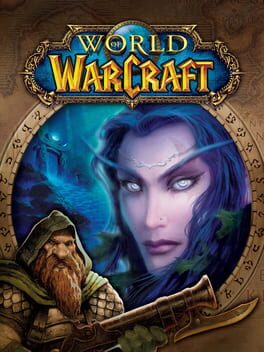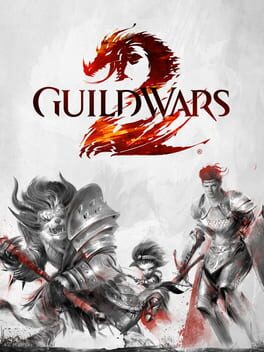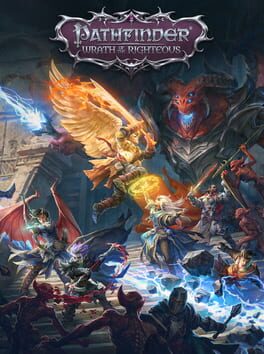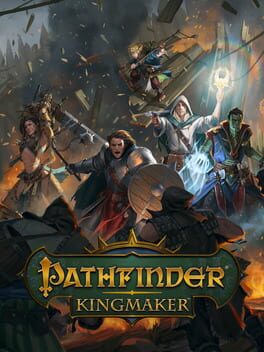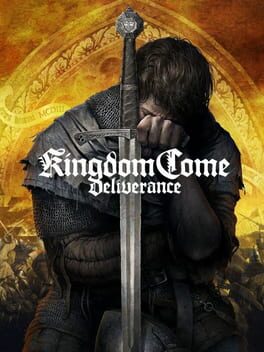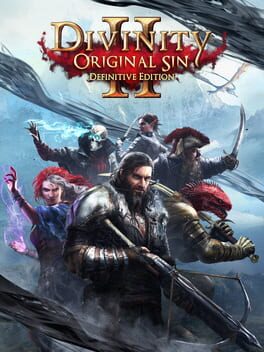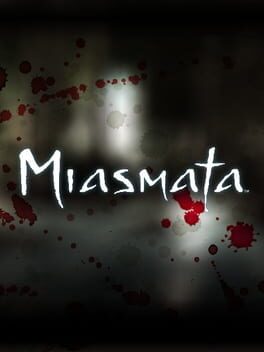raffelito
32 Reviews liked by raffelito
I went into this game expecting it to be absolute ass, but turns out, it was only moderately ass! Shame it's so buggy it's almost literally unplayable :,)
I'm not joking when I say that I had to conduct a six-step ritual in order to start this game up. You had to open origin, start game, end process, restart game, DO NOT IN ANY CIRCUMSTANCE TOUCH A BUTTON, sit through a 30 min loading screen and then- voila. And it's not much of a voila either, considering how pouring half-an-hour into getting past the start screen wasn't a guarantee the game wouldn't crash once running. Oh and if I left the game unattended for more then ~7 minutes it just... froze? Which is pretty bad, considering the game is not good enough to bother EXORCISING BACK TO LIFE.
In all seriousness, it really wasn't as bad as I was expecting it to be. It has a touch of the soullessness I find plagues many modern triple-A releases with far-too-large open worlds (DA:I, Fallout 5, etc etc.), but it's not incoherent or unenjoyable- it's just meh. Story is meh. Ryder is meh. Companions are meh. Mechanics are meh. I like the concept itself well enough- in the beginning I was even enjoying myself- but the further the game went the more I just wanted it to end and to punch the shit out of Ryder and that dumb AI and the companions whose personality can be boiled down into one singular character trait that they kept nagging to you about over and over (Vetra and her sister, that engine guy's desire to have a child, Cora and THE ASARI YES WE GET IT- and so on).
On the plus side, this game really turned me off gaming, which is perfect in time for summer!
I'm not joking when I say that I had to conduct a six-step ritual in order to start this game up. You had to open origin, start game, end process, restart game, DO NOT IN ANY CIRCUMSTANCE TOUCH A BUTTON, sit through a 30 min loading screen and then- voila. And it's not much of a voila either, considering how pouring half-an-hour into getting past the start screen wasn't a guarantee the game wouldn't crash once running. Oh and if I left the game unattended for more then ~7 minutes it just... froze? Which is pretty bad, considering the game is not good enough to bother EXORCISING BACK TO LIFE.
In all seriousness, it really wasn't as bad as I was expecting it to be. It has a touch of the soullessness I find plagues many modern triple-A releases with far-too-large open worlds (DA:I, Fallout 5, etc etc.), but it's not incoherent or unenjoyable- it's just meh. Story is meh. Ryder is meh. Companions are meh. Mechanics are meh. I like the concept itself well enough- in the beginning I was even enjoying myself- but the further the game went the more I just wanted it to end and to punch the shit out of Ryder and that dumb AI and the companions whose personality can be boiled down into one singular character trait that they kept nagging to you about over and over (Vetra and her sister, that engine guy's desire to have a child, Cora and THE ASARI YES WE GET IT- and so on).
On the plus side, this game really turned me off gaming, which is perfect in time for summer!
Mass Effect
2007
Dragon Age: Origins
2009
World of Warcraft
2004
Guild Wars 2
2012
WotR is everything Kingmaker wishes it was, and a little bit more. it is not perfect by any means, many of the storylines (main quests, side quests and companion quests alike) fall flat and the mythic paths are very unbalanced in terms of content and narrative. that said, it was consistently engaging and the crusade management rocks soooo hard in comparison to the Kingmaker kingdom management system. art and graphics are beautiful and the 360 camera has been integrated fantastically, allowing for amazing map designs with depth and interaction on another level. the story is pretty standard stuff, but the mythic path system gives it great flair and replayability, though I found it hard to deviate from my first one (azata main 4life <3), which still remains my favorite. all in all a great game!
This review contains spoilers
This game ticks aaall my boxes but for some reason I didn't love it the way I thought I would.
Although I've never played Pathfinder, I'm a huge fan of similar TTRPGs and must say this was a stunning CRPG. I'm also a sucker for Kingdom management so you won't hear me complain about that.
In classic me-fashion, I will say that I LOVED this game up until the end. Then came House at the Edge of Time (?) and it was as if all momentum just... died. It was such a colossal pain in the ass that a few hours in, I died and reincarnated as a spiteful ghost of my former self that is now writing this review. Luckily Nyrissa girlbossed gatekept gaslighted the rating up half a notch
Although I've never played Pathfinder, I'm a huge fan of similar TTRPGs and must say this was a stunning CRPG. I'm also a sucker for Kingdom management so you won't hear me complain about that.
In classic me-fashion, I will say that I LOVED this game up until the end. Then came House at the Edge of Time (?) and it was as if all momentum just... died. It was such a colossal pain in the ass that a few hours in, I died and reincarnated as a spiteful ghost of my former self that is now writing this review. Luckily Nyrissa girlbossed gatekept gaslighted the rating up half a notch
Salt and Sanctuary
2016
Salt and Sanctuary is singular in its success at sussing out the essence of Souls, if not in world-building, but at least in "feel". Mind you that the former element is a crucial complement to the latter, making Souls Souls. I could map out the grand cosmology of the Dark Souls trilogy and even draw thematic lines to Demon's Souls and Bloodborne, but I couldn't tell you a thing about the lore behind the fog-filled alkaline island of S&S.
It's a compromised achievement, but what an achievement it is nevertheless. Heft is key to making combat consequential in Souls. In Salt and Sanctuary, claymores (or should i say kureimoas) cleave bodies, hammers crush heads, pistols blast fire on faces, and successful ripostes end in explosions of blood, gold, and salt. Accomplishing all this after removing depth is remarkable.
This weightiness doesn't burden the movement, which is all the more emphasized in the flattened world where vertical traversal is integral. It's slow going in the beginning, but its Metroidvaniness will have the player zipping about the intricately interconnected levels. It distinguishes the game from its biggest inspiration, and it just feels right to wall jump and air dash. It also led to most of my deaths with the many long falls and dissipating platforms that expand every area. It's a strange reproduction of the risk/reward tension of progression in Souls, but what's a Souls experience without frustration born out of a lack of patience?
It's a compromised achievement, but what an achievement it is nevertheless. Heft is key to making combat consequential in Souls. In Salt and Sanctuary, claymores (or should i say kureimoas) cleave bodies, hammers crush heads, pistols blast fire on faces, and successful ripostes end in explosions of blood, gold, and salt. Accomplishing all this after removing depth is remarkable.
This weightiness doesn't burden the movement, which is all the more emphasized in the flattened world where vertical traversal is integral. It's slow going in the beginning, but its Metroidvaniness will have the player zipping about the intricately interconnected levels. It distinguishes the game from its biggest inspiration, and it just feels right to wall jump and air dash. It also led to most of my deaths with the many long falls and dissipating platforms that expand every area. It's a strange reproduction of the risk/reward tension of progression in Souls, but what's a Souls experience without frustration born out of a lack of patience?
Elden Ring
2022
*slaps divinity original sin 2* this bad boy can fit so much fucking gameplay in it
this game absolutely rocks and I don't think I will ever shut up about it. not only is it a close-to-flawless RPGs on its own, it also features a multiplayer implementation(!!!!) that is absolutely stellar. there is so much I adore about this game and I don't think anything is ever going to come close to it in terms of personal attachment anytime soon. I could spend hours praising the combat or the writing or the music, but what really made this game for me was the insane attention to details. I was constantly amazed by call-backs to what at the time seemed like minor interactions and choices, even if just mentioned off-handedly. everything in this game is just brimming with /love/, from the carefully crafted companion storylines to details such as allowing the player to choose a personal instrument to carry the soundtrack. I don't usually like to replay games but I don't think I will be able to keep away from this for too long!
this game absolutely rocks and I don't think I will ever shut up about it. not only is it a close-to-flawless RPGs on its own, it also features a multiplayer implementation(!!!!) that is absolutely stellar. there is so much I adore about this game and I don't think anything is ever going to come close to it in terms of personal attachment anytime soon. I could spend hours praising the combat or the writing or the music, but what really made this game for me was the insane attention to details. I was constantly amazed by call-backs to what at the time seemed like minor interactions and choices, even if just mentioned off-handedly. everything in this game is just brimming with /love/, from the carefully crafted companion storylines to details such as allowing the player to choose a personal instrument to carry the soundtrack. I don't usually like to replay games but I don't think I will be able to keep away from this for too long!
Miasmata
2012
Miasmata is a game that focuses on exploration, without relying on other game elements, such as rewards, to push the player to explore.
The game achieves this through 3 gameplay elements: the movement, the map system and the level itself.
The movement is clunky - the player character has momentum and can slip easily. Additionally, there is a tumbling mechanic which punishes the player for careless movements. The punishment is in the form of fever(the analogue to fever in other games is damage/health). It hinders the mobility of the player, makes them lose control for a few moments, disorients them briefly, and changes their position due to the tumbling itself. This serves to make the player mindful of the terrain and their movement speed. You can't move around the world by just holding w and run.
The map system encourages the player to keep track/be aware of their position in the world. There is no minimap, and the map does not show the player's position. To obtain the position, triangulation should be used. This is done by using man-made objects on the island, which are already drawn on the map. By having direct line of sight to them the player could obtain their position and fill in the map around them.
Furthermore the player can use their position to try to determine the location of other man-made objects. Similar to the inconveniences related to the movement, the ones associated with the map also have the goal of making the player more mindful of the terrain. This is in contrast to other games where the terrain merely serves as background decoration. In Miasmata the terrain also affects the line of sight of the player, which can hinder triangulation.
The level itself is composed of open to explore a set of islands, with camps acting as save points and stations to heal yourself and refill basic resources, statues that are used for long-range triangulation, inner monuments and relic buildings acting as guides for the player to figure out their location while within the island.
Forests make it near impossible to locate yourself on the map via triangulation from within one, this is where the aforementioned monuments and relic buildings aid the player. While this is a downside of the forests, they also have a lot of drinkable water, plenty of hiding spots, if there is an encounter with a monster and also paths. It is by far, the fastest way to travel the map through them, especially with the use of a compass, but it should be mentioned that there are many interweaving paths, and the player could get lost easily, and will.
Contrary to the forests inland, the player could travel by the coastlines as well. They have the advantage of free line of sight, making triangulation easier, but at the same time it takes longer to travel the world using them, and lack hiding spots, making encounters with the monster more dangerous.
Lastly the player might climb hills and mountains to locate their position inland, using the elevation and the free line of sight to triangulate. They could also use them to locate other man-made objects around the island.
Most of the gameplay is about traveling between 2 different outposts. In there the player is mostly racing against time, as when the night falls, it is extremely difficult to navigate, and encounters with the monster are likely to end up being fatal. The survival elements itself are simple, the player could not really stockpile on resources, and instead can carry 1 of each type of medication. They serve as a basic heal for the fever, a small buff to the movement, an extra buff that helps with dealing with the monster, and an easy way to locate yourself on the map. They also have a canteen, that could only be refilled with fresh water and the player should drink regularly especially if they run a lot. It should be noted that triangulation takes a lot of ingame time, so if the player is focused on filling on the map, or relies on it too much to figure out their position, they might not reach their destination before nightfall.
After reaching a new outpost, it could be used to safely explore the area around it for herbs. They can be used to craft the aforementioned resources, as well as crafting the cure for the plague, which is the main objective in the game. The crafting itself is done in special camps.
All in all, those elements provide a way more mentally engaging approach to exploration in games. The game itself isn't really challenging, but instead would take longer to complete with unskilled play. It is a very relaxing game and to my knowledge there isn't a game currently that could do the things it does better.
The game achieves this through 3 gameplay elements: the movement, the map system and the level itself.
The movement is clunky - the player character has momentum and can slip easily. Additionally, there is a tumbling mechanic which punishes the player for careless movements. The punishment is in the form of fever(the analogue to fever in other games is damage/health). It hinders the mobility of the player, makes them lose control for a few moments, disorients them briefly, and changes their position due to the tumbling itself. This serves to make the player mindful of the terrain and their movement speed. You can't move around the world by just holding w and run.
The map system encourages the player to keep track/be aware of their position in the world. There is no minimap, and the map does not show the player's position. To obtain the position, triangulation should be used. This is done by using man-made objects on the island, which are already drawn on the map. By having direct line of sight to them the player could obtain their position and fill in the map around them.
Furthermore the player can use their position to try to determine the location of other man-made objects. Similar to the inconveniences related to the movement, the ones associated with the map also have the goal of making the player more mindful of the terrain. This is in contrast to other games where the terrain merely serves as background decoration. In Miasmata the terrain also affects the line of sight of the player, which can hinder triangulation.
The level itself is composed of open to explore a set of islands, with camps acting as save points and stations to heal yourself and refill basic resources, statues that are used for long-range triangulation, inner monuments and relic buildings acting as guides for the player to figure out their location while within the island.
Forests make it near impossible to locate yourself on the map via triangulation from within one, this is where the aforementioned monuments and relic buildings aid the player. While this is a downside of the forests, they also have a lot of drinkable water, plenty of hiding spots, if there is an encounter with a monster and also paths. It is by far, the fastest way to travel the map through them, especially with the use of a compass, but it should be mentioned that there are many interweaving paths, and the player could get lost easily, and will.
Contrary to the forests inland, the player could travel by the coastlines as well. They have the advantage of free line of sight, making triangulation easier, but at the same time it takes longer to travel the world using them, and lack hiding spots, making encounters with the monster more dangerous.
Lastly the player might climb hills and mountains to locate their position inland, using the elevation and the free line of sight to triangulate. They could also use them to locate other man-made objects around the island.
Most of the gameplay is about traveling between 2 different outposts. In there the player is mostly racing against time, as when the night falls, it is extremely difficult to navigate, and encounters with the monster are likely to end up being fatal. The survival elements itself are simple, the player could not really stockpile on resources, and instead can carry 1 of each type of medication. They serve as a basic heal for the fever, a small buff to the movement, an extra buff that helps with dealing with the monster, and an easy way to locate yourself on the map. They also have a canteen, that could only be refilled with fresh water and the player should drink regularly especially if they run a lot. It should be noted that triangulation takes a lot of ingame time, so if the player is focused on filling on the map, or relies on it too much to figure out their position, they might not reach their destination before nightfall.
After reaching a new outpost, it could be used to safely explore the area around it for herbs. They can be used to craft the aforementioned resources, as well as crafting the cure for the plague, which is the main objective in the game. The crafting itself is done in special camps.
All in all, those elements provide a way more mentally engaging approach to exploration in games. The game itself isn't really challenging, but instead would take longer to complete with unskilled play. It is a very relaxing game and to my knowledge there isn't a game currently that could do the things it does better.
